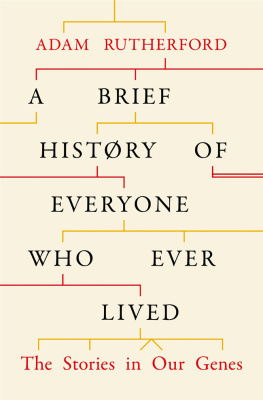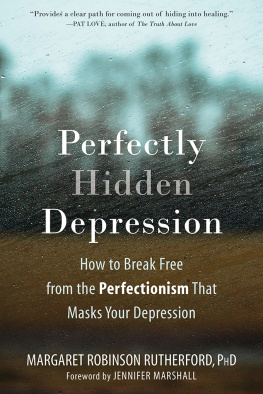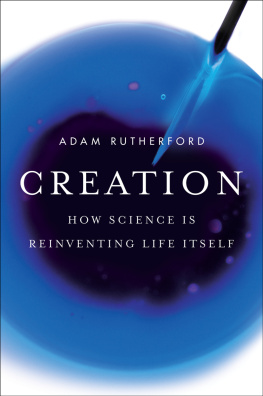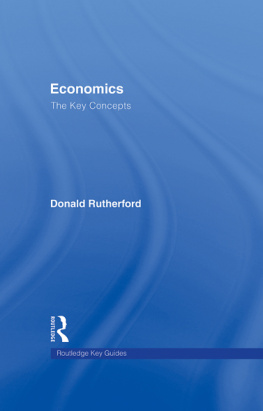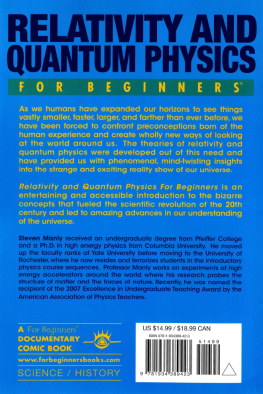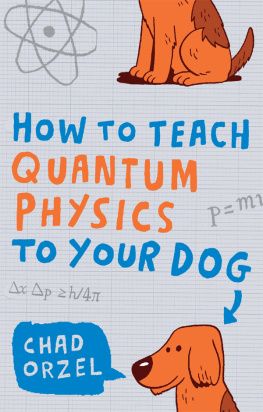QUANTUM PHYSICS
FOR BEGINNERS
The Step by Step Guide To Discover All The Mind-Blowing Secrets Of Quantum Physics And How You Unknowingly Use Its Most Famous Theories Every Day
Copyright 2021 - All rights reserved.
The content contained within this book may not be reproduced, duplicated or transmitted without direct written permission from the author or the publisher.
Under no circumstances will any blame or legal responsibility be held against the publisher, or author, for any damages, reparation, or monetary loss due to the information contained within this book. Either directly or indirectly.
Legal Notice:
This book is copyright protected. This book is only for personal use. You cannot amend, distribute, sell, use, quote or paraphrase any part, or the content within this book, without the consent of the author or publisher.
Disclaimer Notice:
Please note the information contained within this document is for educational and entertainment purposes only. All effort has been executed to present accurate, up to date, and reliable, complete information. No warranties of any kind are declared or implied. Readers acknowledge that the author is not engaging in the rendering of legal, financial, medical or professional advice. The content within this book has been derived from various sources. Please consult a licensed professional before attempting any techniques outlined in this book.
By reading this document, the reader agrees that under no circumstances is the author responsible for any losses, direct or indirect, which are incurred as a result of the use of information contained within this document, including, but not limited to, errors, omissions, or inaccuracies.
TABLE OF CONTENTS
INTRODUCTION
Q uantum physics is often thought to be tough because it's related to the study of physics on an unbelievably small scale, though it applies directly to many macroscopic systems. We use the descriptor "quantum" because, as we will see later in the book, when we talk about discrete quantities of energies or packets, in contrast with the classical continuum of Newtonian mechanics.
However, some quantities still attack continuous values, as we'll also see. In quantum physics, particles have wavy properties, and the Schrodinger wave equation, which is a selected differential equation, governs how these waves behave.
In a certain sense, we will discover that quantum physics is another example of a system governed by the wave equation.
It's relatively simple to handle the particular waves. Anyways, we observe several behaviors in quantum physics that are a combination of intricate, enigmatic, and unusual. Some examples are the uncertainty principle that affects measurements, the photoelectric effect, and the wave-particle duality. We will discover all of them in the book.
Even though there are several confusing things about quantum physics, the good news is that it's comparatively simple to apply quantum physics to a physical system to figure out how it behaves. We can use quantum mechanics even if we cannot perceive all of the subtleties of quantum physics.
However, we will excuse ourselves for this lack of understanding of quantum physics because almost nobody understands it (well, maybe a few folks do). If everybody waited until quantum mechanics was fully understood before using it, then we'd be back to the 1920s. The bottom line is that quantum physics works to build predictions that are consistent with experiments.
So far, there are no failures when using it, so it would be foolish not to take advantage of it.
There are so many daily objects we use that are based on technologies derived from quantum mechanics principles: Lasers, Telecommunication (devices and infrastructures), solar energy production, semiconductors, and superconductors, superfluids, medical devices, and much more.
This book will describe quantum mechanics and its experiments and applications. We will try to make it simpler and easy to understand without the complicated math behind it (we will show some formulas and equations).
So, follow me, and let's browse through the "magic" world of quantum physics.
CHAPTER 1:
WHAT IS QUANTUM PHYSICS
W e define quantum mechanics as that branch of physics that allows the calculation of the probabilities of the "microscopic" world's behavior. This can ends up in what might seem to be some strange conclusions concerning the physical world. At the dimensions of atoms and electrons, several classical mechanics equations that describe the motion and speed of the macroscopic world do not work. In classical mechanics, objects exist in an exceedingly specific place at a particular time. However, in quantum physics, particles and sub-particles instead are in a haze of probability; they have an exact possibility of being in a state A and another chance of being in a state B at the same time.
Quantum mechanics developed over several decades, starting as a group of disputable mathematical explanations of experiments that the mathematics of classical mechanics couldn't explain.
It began in the twentieth century when Albert Einstein revealed his theory of relativity, a separate mathematical and physics revolution to describe the motion of objects at speeds close to light speed. Unlike the theory of relativity, however, the origins of QM can not be attributed to any person. Instead, multiple physicists contributed to a foundation of 3 revolutionary principles that increased acceptance and experimental verification between 1900 and 1930. They are: Quantized properties: some properties, like position, speed, and color, will typically solely occur in specific set amounts, very similar to a dial that "clicks" from variety to variety. This observation challenged a fundamental assumption of classical mechanics that states that we can distribute such properties on a continuous spectrum. To explain the behavior where some properties "clicked" like a dial with specific settings, scientists started to use the word "quantized."
Particles of light: we can sometimes describe light behavior as a particle. This light "as a particle" at first raised many criticisms between scientists because it ran contrary to two hundred years of experiments, as it shows that light behaved as a wave, very similar to ripples on the surface of a peaceful lake. Light behaves the same way: it bounces off walls and bends around corners, the crests and troughs of the wave will add up or annul. The sum of more wave crests leads to brighter light, whereas waves that annul themselves turn into darkness. We can imagine a light source like a ball on a stick being rhythmically dipped within the center of a lake. The color emitted corresponds to the gap between the crests; the ball's rhythm's speed decides the color.
Waves of matter: Matter can even behave as a wave. This behavior is counterintuitive as all the known experiments until recent years had shown that matter (such as electrons) exists as particles.
CHAPTER 2:
HEISENBERG UNCERTAINTY PRINCIPLE
I n this chapter, we will consider a pillar of quantum physics that places essential constraints on what we can truly measure, a fundamental property first discovered by Werner Heisenberg, referred to as the "Heisenberg Uncertainty Principle."
We are accustomed to thinking that the word "principle" is associated with something that rules the universe. Therefore when we face the term "Uncertainty Principle," we are disoriented because it looks like juxtaposing opposites. However, in the beginning, the Uncertainty Principle may be a fundamental property of quantum physics, discovered through classical mechanics reasoning (a classically primarily based logic still used by several physics academics to teach the Uncertainty principle these days). This Newtonian approach is that if one examines elementary particles using light, the act of striking the particle with light (even only one photon) will change the particle position and Momentum. It would be impossible to establish where the particle indeed is because now it's not where it was anymore. I know it can look strange. The fact is that at the size level of the elementary particles, the energy (the light) used to make the measurement is of the same order of magnitude as the object you are going to measure. So it can significantly change the properties of the measured object.




